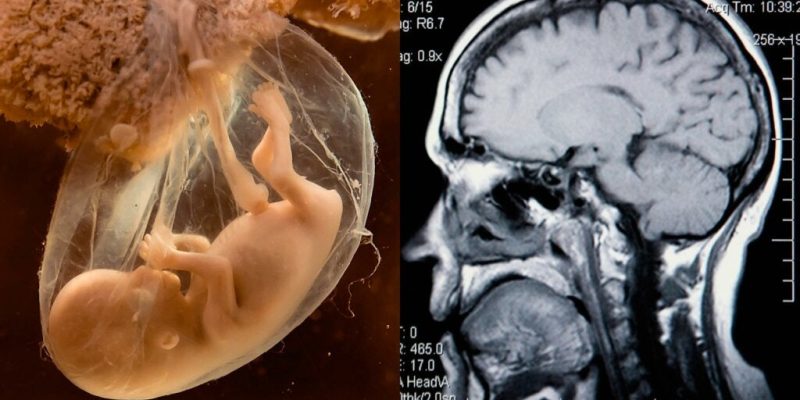Different countries have different guidelines regarding the taking of antidepressants during pregnancy. Indeed, although the symptoms of gestational depression are common across international borders, there are notable differences in proposed interventions.
Postpartum depression has gained visibility in recent years, destroying the myth that the period after pregnancy was always a happy time. That said, depression may also develop before a woman becomes pregnant or during the pregnancy. In fact, the term perinatal depression includes depression during pregnancy and within a year after delivery.
New research results indicate that different European countries have different guidelines for perinatal depression and medication use. Some countries don’t even have any guidelines. Let’s take a look at the main differences between countries on this issue.
Antidepressants in pregnancy
Peripartum or perinatal depression affects approximately one in eight women. These two terms tend to be used interchangeably. However, the former term relates more specifically to women. The disorder often persists throughout the peripartum period. In fact, up to 47 percent of women with postpartum depression have experienced an antenatal episode.
In many cases, depression coincides with anxiety. This adds a substantial mental health burden to the woman. Therefore, they may need tailored interventions, including pharmacotherapy. It all depends on the course of their individual depression, the time of onset, and the typology of the prominent symptoms. It’s usual to offer psychotherapy as a first option and then medication. That said, it must be taken into account that practices vary from one country to another. Indeed, despite a great deal of interdisciplinary research, an international understanding of the problem is still lacking.
Perinatal depression
Perinatal depression is associated with a spectrum of negative long-term obstetric outcomes in offspring. These include potential adverse impacts on the mother-infant relationship. It also substantially affects the well-being and functioning of women and can even lead to suicide. In moderate to severe cases, or after failure to respond to first-line psychotherapy, pharmacotherapy with antidepressants is often required. Pooled results from 40 cohort studies indicate that selective serotonin reuptake inhibitors (SSRIs) are the most widely used antidepressants.
The prescription of these medications ranges between 3.5 percent before pregnancy, 3.0 percent during pregnancy, and 4.7 percent in the first postpartum year. In some cases, augmentation with antipsychotics or adjunctive pharmacotherapy with sedating benzodiazepines or antihistamines may be necessary.
Pros and cons
Pregnancy remains a major factor in antidepressant discontinuation. Of those who chose to continue treatment, 49 percent have low antidepressant adherence. Consequently, the decision-making process about antidepressant treatment during pregnancy or lactation is complex.
The process involves weighing the possible risk of exposure in utero or in breast milk against the potential adverse effects of suboptimally treated maternal peripartum depression for both mother and child. Clinical practice guidelines (CPG) for the management of peripartum depression can facilitate this decision-making process. That said, many countries haven’t established CPGs for peripartum depression. Furthermore, the available recommendations aren’t always uniform.
In 2018, a systematic review that evaluated the content of the available CPGs found that only four countries recommend the continuation of pre-existing antidepressant treatment during pregnancy. This previous work extracted only CPG recommendations that adhere to the quality criteria of the Appraisal of Guidelines for Research and Evaluation (AGREE) instrument.
Therefore, there remain gaps in knowledge about the current practices of CPGs that don’t meet these quality criteria. In addition, it’s unknown to what extent the CPGs are followed in relation to the prescription of antidepressants and other psychotropics.
Different cultures and drug use in pregnancy
In some Eastern European countries, it’s far more common to use benzodiazepines in pregnant women than antidepressants. This tends to happen even if antidepressants are the preferred choice for anxiety, which is the condition for which benzodiazepines are usually prescribed.
Benzodiazepines are a group of drugs for the short-term treatment of sleep disorders. They relieve restlessness and anxiety and reduce muscle tension and cramps. However, the use of benzodiazepines in pregnant women isn’t recommended because they present a greater risk to the child than antidepressants. Furthermore, there’s a risk of addiction and abuse with benzodiazepines. The fact that different countries have common guidelines for the same symptoms isn’t surprising, as there’s always new knowledge appearing in this field.
Results found in Denmark
The risk of serious mental illness in the mother was found to be increased if she stopped taking antidepressants during pregnancy, but not if she stopped before becoming pregnant.
This is an example of new knowledge that should be reflected in guidelines for patients. In this case, it’s probably understandable that the data hasn’t yet been added since it’s a completely new study. However, there are also many instances where guidelines haven’t been updated in light of recent findings.
Helping the mother is paramount
In certain settings, pharmacological treatment for gestational depression can be really difficult to obtain. For fear of harm to the fetus and on medical advice, the mother might change the medication, reduce the dose, or stop taking it.
Obviously, the care of the fetus is paramount. That said, there’s a reason why the mother requires antidepressants and that reason doesn’t go away during pregnancy. As a matter of fact, there are even symptoms that can worsen. Therefore, when it comes to perinatal depression, we can say that we help the child better when we help the mother first.
New ways to help the mother
Despite a lot of interdisciplinary research, there are still no aligned cross-border guidelines, claims researcher, Angela Lupattelli, from the Department of Pharmacy at the University of Oslo (Norway). Lupattelli is one of three Norwegian participants in Riseup-PPD COST ACTION, a major EU-funded initiative to find and collect knowledge about what researchers call perinatal depression.
The researchers will also investigate new drug formulations, where the findings are currently mixed. Light therapy, omega-3 fatty acids, electrotherapy, and magnetic therapy are among the solutions being studied. On the other hand, efforts are being redoubled in prevention policies with the intention of reducing the cases that require pharmacological intervention.
The Riseup-PPD COST ACTION research work started in 2019 and will be completed in 2023. By then, the researchers hope to have a clear understanding of perinatal depression. This will act as a basis for setting down guidelines in different countries. The strength of the study is that it involves women who’ve experienced such depression. Thanks to their shared experiences, experts will be able to make important adjustments in the future.
The post Antidepressants in Pregnancy: Different Countries, Different Views appeared first on Exploring your mind.



















Comments